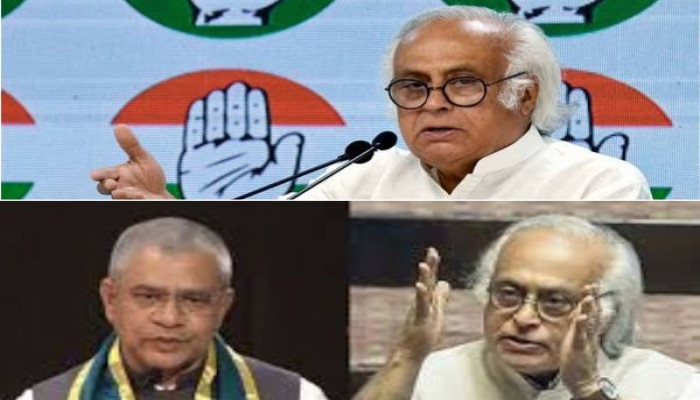Vaishnaw hits back at Jairam Ramesh; says Fairchild founder came to India in 1964, Congress’ “license-permit raj”, “policy paralysis” stalled semiconductor projects
- In Reports
- 08:18 PM, Aug 16, 2025
- Myind Staff
The Modi government had started a major semiconductor mission and earlier this week the Union Cabinet approved four more semiconductor projects under the India Semiconductor Mission.
Replying to a post of Jairam Ramesh on X, Ashwini Vaishnaw asked, “why didn’t Congress develop semiconductor industry” in India even though the country had the required talent.
He said that Intel had also tried to set up a semiconductor unit in India in 2005-06 but “was not allowed because of the policy paralysis of the UPA regime.” He reminded that the Congress-led UPA governments were in power from 2004 to 2010.
Vaishnaw said that the entire ecosystem including design, fabrication, packaging, equipment, chemicals and gases was taking shape in Bharat with the new projects approved last week. He added that two of the largest equipment manufacturers, Applied Materials and Lam Research, were setting up their design, production and validation facilities in the country. “Why didn’t Congress develop semiconductor industry in Bharat despite our country having requisite talent? @Jairam_Rameshji,” Vaishnaw said.
Jairam Ramesh had earlier attacked Prime Minister Modi over his remarks targeting Congress governments for delaying progress on semiconductors for decades.
PM Modi in his Independence Day address had said, “semiconductors have become a global force—but 50-60 years ago, the idea was stalled, delayed and shelved.” He added, “The very conception of semiconductors was aborted. We lost 50-60 years. Meanwhile, many countries mastered semiconductors and established their strength in the world. Today we have freed ourselves from that burden and advanced the work on semiconductors in mission mode. Six different semiconductor units are taking shape on the ground, and we have already given the green signal to four new units.”
The Union Minister said that under the Modi government the semiconductor ecosystem was rapidly expanding with six semiconductor units, one fab and five ATMP, at different stages of planning, construction and execution, along with four more that were approved. “We are building a silicon fab at 50,000 wafer-starts per month capacity. Six semiconductor units (one fab and five ATMP) are at different stages of planning, construction and execution. Four more (one silicon carbide fab and three ATMP) lab scale. A commercial scale silicon fab works at 20,000-40,000 wafer-starts per month,” Vaishnaw said.
Jairam Ramesh meanwhile called PM Modi’s claims misleading and said that semiconductor development in India had started long back. He said, “One more example of what a pathological liar Mr. Modi is. Semiconductors Complex Ltd established in Chandigarh started operations in 1983.”
The Congress leader pointed to PM Modi’s remarks that the idea of a semiconductor factory came forth 50-60 years ago but was “killed in the womb” and the country lost many decades. In his Independence Day speech, PM Modi had said that the 21st century was a technology-driven century and nations which mastered technology reached new heights of development and economic power.
PM Modi said his aim was not to criticise any individual or government but to create awareness among young people. “When we speak of various dimensions of technology, I wish to draw your attention to semiconductors. I do not stand here at the ramparts of the Red Fort to criticise any person or government, nor do I wish to. But it is equally important for the youth of our country to know. In our country, files related to semiconductors started moving 50-60 years ago. The idea of a semiconductor factory began then. My young friends will be shocked to know that today, semiconductors have become a global force—but 50-60 years ago, the idea was stalled, delayed and shelved,” PM Modi said.
Electronics and Information Technology Minister Ashwini Vaishnaw also said that the Semiconductor Laboratory in Mohali was still at a lab scale while a commercial scale silicon fab worked at 20,000 to 40,000 wafer-starts per month. He added, “Fairchild founder Robert Noyce came to Bharat in 1964. License permit raj of Congress did not allow setting up a semiconductor plant. Went to HongKong. Then founded Intel. Rest is history. Intel once again tried to set up a semiconductor unit in Bharat in 2005-06. Once again it was not allowed because of the policy paralysis of UPA regime. Semiconductor Laboratory, Mohali works at lab scale. A commercial silicon fab works at 20,000-40,000 wafer-starts per month.”







Comments